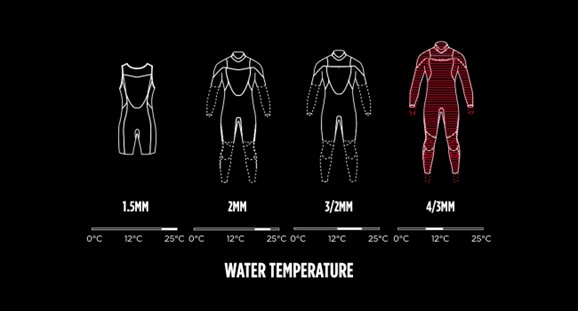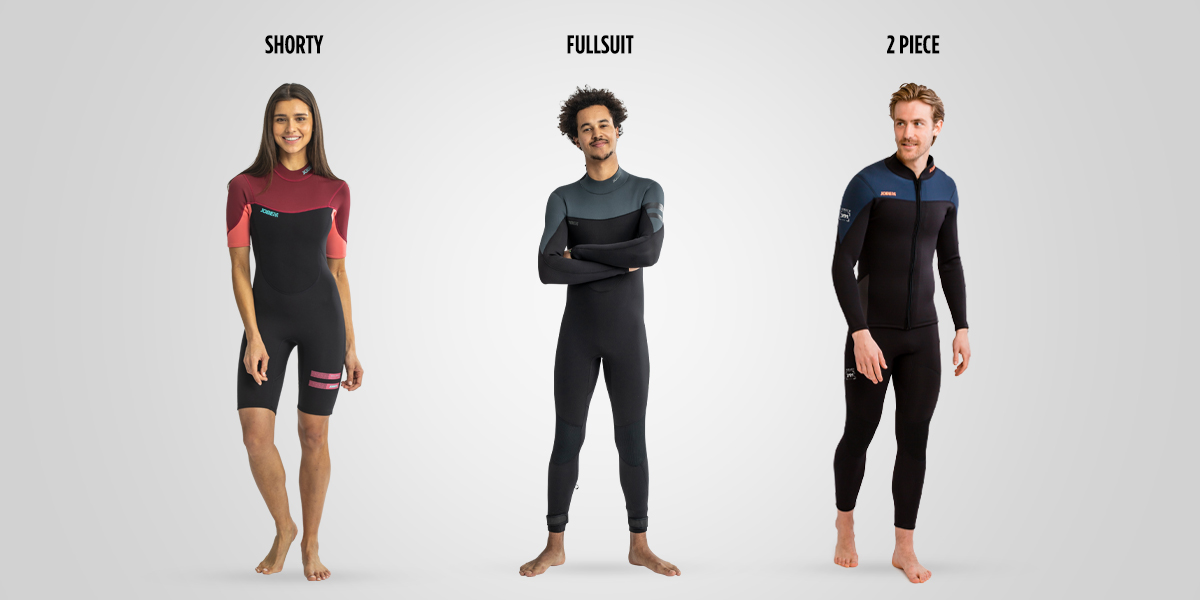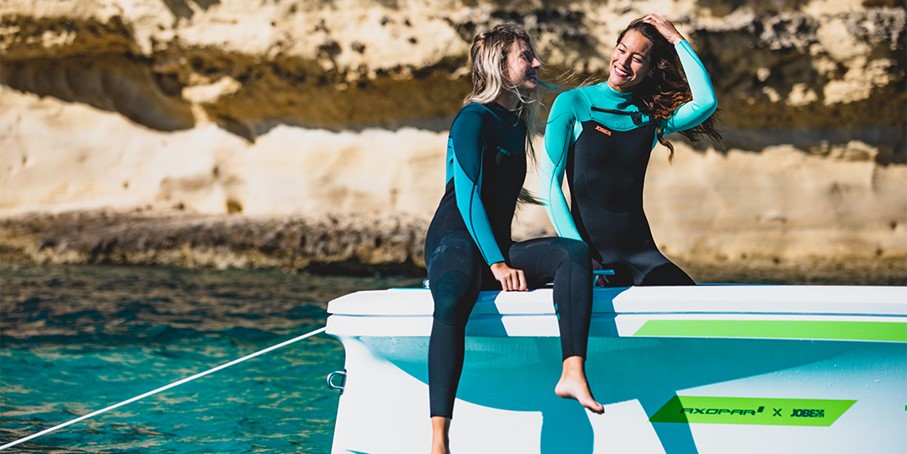Wetsuits: The Ultimate Guide (2023)
A wetsuit is a type of garment primarily designed for individuals who engage in water-based activities such as wakeboarding, waterskiing, and other related sports. It is typically made of neoprene material, which is highly resistant to water and provides excellent insulation properties.
The primary purpose of a wetsuit is to protect the wearer from the cold water by trapping a thin layer of water between the skin and the suit. This layer of water is warmed by the body, which helps to maintain the wearer's body temperature in colder water conditions. Wetsuits are available in a range of thicknesses and styles, depending on the specific use and water temperature.
Wetsuits offer not only thermal insulation but also protection against other environmental elements such as UV rays and wind. Their ability to provide insulation and protection makes them essential equipment for individuals who spend extended periods of time in the water, especially in cold water conditions.
Differences in wetsuits
The type of wetsuit that is best for you will depend on a number of factors, including the water temperature, the type of water activity you will be doing and your body size and shape. Things to consider when buying a wetsuit:
- Thickness: Wetsuits are available in a range of thicknesses, measured in millimetres. Thicker wetsuits provide more insulation and are better for colder water, while thinner wetsuits are better for warmer water.
- Style: Wetsuits are available in several styles, from full suits to shorties. Full suits cover the entire body, including the arms and legs, and are the warmest option. Shorties cover the upper body and are the least warm option.
- Fit: It is important to choose a wetsuit that fits properly. A wetsuit that is too small will be uncomfortable and restrict movement, while a wetsuit that is too large will be loose and may allow water to enter, reducing its effectiveness.
- Material: Wetsuits are typically made from neoprene, a synthetic rubber that is flexible, durable, and resistant to water. Higher-quality wetsuits may use more expensive materials, such as limestone, which can provide additional insulation and durability.
Be sure to read the sizing chart and follow their recommendations for finding the right size wetsuit. It is also a good idea to consider the specific needs and requirements of the water activity you will be doing when choosing a wetsuit.
Are wetsuit sizes the same as regular clothes?
Wetsuit sizes are generally similar to regular clothing sizes, but there are some important differences to keep in mind when selecting a wetsuit.
Wetsuits are designed to fit snugly against the body in order to provide insulation and maintain flexibility. As a result, they tend to fit more closely than regular clothing, and you may need to size up or down depending on your preference for a tighter or looser fit. Make sure the wetsuit is not too tight or too loose. Both instances will prevent you from having optimal movement.
It's also important to consider the thickness of the wetsuit and the type of activity you'll be using it for. A thicker wetsuit will be more restrictive and may require a larger size, while a thinner wetsuit will be more flexible and may fit better in a smaller size.
Which wetsuit for which water temperature?
The thickness of a wetsuit is an important factor to consider when selecting one for a particular water temperature. In general, the colder the water, the thicker the wetsuit should be.
Here are some general guidelines for selecting a wetsuit based on water temperature:
- Water temperatures below 57°F (14°C): A full wetsuit with a thickness of at least 4/3mm (millimetres) is recommended.
- Water temperatures between 57-64°F (14-18°C): A full suit with a thickness of at least 3/2mm is recommended.
- Water temperatures between 64-77°F (18-24°C): A shorty wetsuit with a thickness of at least 2mm is recommended.
- Water temperatures above 77°F (25°C): A shorty wetsuit with a thickness of at least 1.5mm is recommended.
Keep in mind that these are just general guidelines, and the actual thickness of wetsuit you'll need will depend on your personal tolerance for cold water and the length of time you'll be in the water. It's also a good idea to consider other factors such as the wind and air temperature, as well as your activity level, when selecting a wetsuit.

Will a wetsuit keep you warm?
A wetsuit can help keep you warm in cold water by trapping a thin layer of water between your skin and the wetsuit. Your body then heats up this layer of water, which helps to insulate you from the colder water outside the wetsuit.
The thickness of the wetsuit is an important factor in determining how warm it will keep you. In general, the thicker the wetsuit, the warmer it will be. However, it's important to note that wetsuits are not designed to keep you completely warm in extremely cold water. They are intended to provide some insulation and extend the amount of time you can comfortably stay in the water, but they are not a replacement for proper cold water protection such as a drysuit or thermal layers.
It's also important to consider other factors that can affect your warmth in the water, such as the wind and air temperature, your activity level, and your personal tolerance for cold water.
Can wetsuits be used for swimming?
Wetsuits are commonly used for a variety of water sports and activities, including swimming. They can provide you with insulation in cold water, and can also protect the skin from abrasions and cuts. However, wetsuits are not designed for use as a standalone flotation device and should not be relied upon for this purpose. They are intended to provide some buoyancy, but not enough to keep an unconscious person afloat. It's important to always swim with a buddy and to use appropriate flotation devices when necessary.
Wetsuits are also not designed for use in extremely cold water, as they are not a replacement for proper cold water protection such as a drysuit or thermal layers. It's important to consider the water temperature and your personal tolerance for cold water when deciding whether to wear a wetsuit while swimming.
In general, it's a good idea to use caution and common sense when swimming in a wetsuit and to follow all safety guidelines and recommendations. It's also important to select a wetsuit that fits properly and allows for a full range of movement.
Why is my wetsuit stinky and how can I prevent it?
It is normal for a wetsuit to develop an odor over time, especially if it is not properly cared for or stored. Here are some tips for reducing the odor of a wetsuit:
- Rinse the wetsuit thoroughly with fresh water after each use. This will help to remove any salt, sand, or other debris that may be trapped in the suit, which can contribute to odor.
- Dry the wetsuit completely before storing it. If the wetsuit is left damp or humid, it is more likely to develop an odor.
- Store the wetsuit in a well-ventilated area. This will help to prevent the build-up of moisture and bacteria, which can cause odor.
- Bonus tip: there are some soaps/shampoos specifically made for cleaning wetsuits
By following these tips, you should be able to reduce the odor of your wetsuit and keep it smelling fresh.

Which wetsuit is best for me?
Shorties
Shorty wetsuits are a type of wetsuit that is designed to provide thermal insulation and protection to the upper body and thighs while leaving the arms and lower legs exposed. They are typically made of neoprene or other similar materials that are both waterproof and flexible.
Shorty wetsuits are commonly used in warm water conditions, where the water temperature is not cold enough to require a full wetsuit. They are popular among wakeboarders, paddleboarders, and other water sports enthusiasts who want to maintain mobility and flexibility in their arms and legs while still staying warm and protected.
The shorty design allows for greater mobility in the arms and legs, making it easier to paddle, swim, or perform other water sports activities. Additionally, shorty wetsuits are easier to put on and take off than full wetsuits, making them a convenient option for those who are frequently in and out of the water.
Shorty wetsuits from Jobe are available in 1.5mm, 2mm and 3/2mm
Fullsuits
Fullsuits, also known as full-length wetsuits, are a type of wetsuit that is designed to provide full-body thermal insulation and protection from cold water. Fullsuits cover the entire body, including the arms and legs, and are typically made of neoprene or other similar materials that are both waterproof and flexible. The higher-end wetsuits have more stretchy material.
Fullsuits are commonly used in colder water conditions, where the water temperature is low enough to require protection for the entire body. They are popular among water sports enthusiasts who spend extended periods of time in cold water.
The fullsuit design allows for maximum thermal insulation and protection, keeping the wearer warm and comfortable even in very cold water. The flexible neoprene material allows for a full range of motion, so the wearer can still move and perform water sports activities with ease. Additionally, fullsuits are designed to be tight-fitting, which helps to prevent water from entering the suit and chilling the body.
Full body wetsuits from Jobe are available in 2mm, 3/2mm, 4/3mm and 5/3mm
2 Piece Wetsuits
The two-piece design allows for greater flexibility and mobility in the arms and legs, making it easier to paddle, swim, or perform other water sports activities. The separate pieces can also be mixed and matched, so the wearer can choose the best combination of top and bottom for their specific needs. Additionally, two-piece wetsuits are often easier to put on and take off than full wetsuits, making them a convenient option for those who are frequently in and out of the water.
2 Piece wetsuits from Jobe are available in 1.5mm and 2mm

 Menu
Menu









